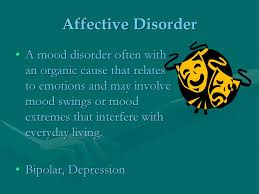
Mental health care and screenings in public school system
Order Instructions:
Planning Your Visit Guidelines
Graded Assignment 2
PURPOSE
The purpose of this assignment is to: (a) identify and articulate a plan for a legislative/policy making visit (CO #2); (b) deliver a message and ask/recommendations (CO #2, 3), and (c) communicate ideas in a clear, succinct, and scholarly manner. (CO #3)
COURSE OUTCOMES
This assignment enables the student to meet the following course outcomes:
(CO #2) Employ strategies to affect the development, implementation, and consequences of policies at the institutional, local, national, and international levels. (PO 4, 8, 10)
(CO #3) Communicate with policymakers to advocate for effective policies that affect nurses and nursing, consumers, or the health care system. (PO 2, 3,10)
(CO #4) Analyze the historical, ethical, and political contexts of health care policy and the consequences of policy implementation. (PO 6, 10)
(CO #5) Advocate for institutional, local, national, and international policies that influence health care and its consumers and nurses and their nursing practice. (PO 2, 10)
TOTAL POINTS: 175 points
REQUIREMENTS
Assignment Criteria for Presentation
1. Introduce your chosen policy issue, the current status, and an overview of your plan for a legislative visit.
2. Articulate key strategies involved in your plan, message, and recommendations under each of the Planning Your Visit Ungraded Worksheet 2 sections using headings in your paper.
3. Provide an analysis of empirical evidence supporting your approach strategies including plan, message, and follow-up.
4. Provide specific examples of the impact and/or importance of a successful visit and follow-up to nursing.
5. Provide concluding statements summarizing the content.
6. Paper will be five (5) pages, excluding title and reference pages, and in APA format 6th edition.
PREPARING THE PAPER
Following completion of Planning Your Visit Ungraded Worksheet 2, develop a plan for visiting your policymaker, including the message/ask, and the recommendation(s) you will deliver. Include a minimum of five (5) classic references or current references (published within the past 5 years) that support your plan, the message, recommendations, and follow-up.
Category Points % Description
Introduction and Conclusion 35 20 Introduction clearly introduces your policy-priority issue. Concluding statements summarize content.
Key Strategies 40 22 Articulate key strategies involved in your plan, message, and recommendations under each of the Planning Your Visit Ungraded Worksheet 2 sections using headings in your paper.
Empirical Evidence 35 20 Provide an analysis of empirical evidence supporting your approach strategies including plan, message, and follow-up.
Specific Examples 35 20 Provide specific examples of the impact and/or importance of a successful visit and follow-up to nursing.
APA Format 15 9 Text, title page, and references are consistent with APA format 6th edition.
Writing Quality 15 9 Rules of grammar, word usage, sentence and paragraph format, and punctuation are followed. Paper length appropriate.
Total 175 100
A quality assignment will meet or exceed all of the above requirements.
GRADING RUBRIC
Assignment Criteria A
(100–92%)
Outstanding or highest level of performance B
(91–84%)
Very good or high level of performance C
(83–76%)
Competent or satisfactory level of performance F
(75–0%)
Poor or failing or unsatisfactory level of performance
Content
Possible Points = 145 Points
Introduction and Conclusion
35–32 Points 31–29 Points 28–27 Points 26–0 Points
- Introduction clearly introduces your policy-priority issue, current status, and overview of plan for legislative visit. Concluding statements summarizing content have no inaccuracy.
- Introduction of your policy-priority issue, current status, and overview of plan for legislative visit has rare inaccuracy. Concluding statements lack occasional important element or specificity.
- Introduction of your policy-priority issue, current status, and overview of plan for legislative visit lacks occasional important element or specificity.
- Concluding statements lack occasional important element or specificity. Introduction of your policy-priority issue, current status, and overview of legislative visit has multiple instances of inaccuracies or is lacking content. Concluding statements have multiple instances of inaccuracies or lacks content.
Key Strategies 40–37 Points 36–34 Points 33–30 Points 29–0 Points
- Identification of all key strategies of your policy-priority issue plan, ask, and recommendations are clearly analyzed and fully articulated.
- Identification of key points of your policy-priority issue plan, ask, and recommendations has rare inaccuracy or lack of detail/clarity. Identification of key points of your policy-priority issue plan, ask, and recommendations lacks occasional important elements or specificity.
- Identification of key points of your policy-priority issue plan, ask, and recommendations has multiple instances of inaccuracies, lacks content or clarity.
Empirical Evidence 35–32 Points 31–29 Points 28–27 Points 26–0 Points
- Empirical evidence supporting your approach strategies to your policy-priority issue has no inaccuracy and is clearly articulated.
- Empirical evidence supporting your approach strategies to your policy-priority issue lacks occasional important elements or specificity.
- Empirical evidence supporting your approach strategies to your policy-priority issue has multiple instances of inaccuracies or lacks detail/articulation.
- Empirical evidence supporting your approach strategies to your policy-priority issue is missing.
Specific Examples 35–32 Points 31–29 Points 28–27 Points 26–0 Points
- Provides specific examples of the impact and/or importance of a successful visit and follow-up to nursing and has no inaccuracy and is clearly articulated.
- Provides specific examples of the impact and/or importance of a successful visit and follow-up to nursing and lacks occasional important elements or specificity and/or lacks clarity.
- Provides specific examples of the impact and/or importance of a successful visit and follow-up to nursing and has multiple instances of inaccuracies and/or lacks clarity.
- No specific examples of the impact and/or importance of a successful visit and follow-up to nursing.
Points Points Points Points
Content Subtotal _____of points
Format
Possible Points = 30 Points
APA Format: 15–14 Points 13 Points 12–11 Points 10–0 Points
Text, title page, and reference page(s) are completely consistent with APA format. There are 1–2 APA format errors in the text, title page, and/or reference page(s). There are 3–4 APA format errors in the text, title page, and/or reference page(s). There are 5 or more APA format errors in the text, title page, and/or reference page(s).
Writing Quality. 15–14 Points 13 Points 12–11 Points 10–0 Points
- Paper is appropriate in length. References include the minimum of five (5) scholarly references, excluding the course text. Rules of grammar, spelling, word usage, and punctuation are consistent with formal written work.
- Paper is short or long in length and/or contains fewer than 5 but more than 1 scholarly reference, excluding course text, or references utilized are not scholarly. Rules of grammar, spelling, word usage, and punctuation are consistent with formal written work with1–2 exceptions.
- Paper is short or long in length and contains only 1 scholarly reference. Additional references are not scholarly.
- Rules of grammar, spelling, word usage, and punctuation are consistent with formal written work with 3–4 exceptions.
- Paper is two or more pages short or long in length and does not contain scholarly references.
- References utilized are not scholarly. Rules of grammar, spelling, word usage, and punctuation are not followed with 5 or more errors.
Format Subtotal _____of points
Total Points _____of points
SAMPLE ANSWER
Mental health care and screenings in public school system
In healthcare setting, there are various policy issues aimed at providing solutions to various healthcare problems. This discussion focuses on policy on mental health care and screenings in public school system. Many children in schools suffer from mental diseases such as autism, memory loss and this impact on their studies in schools. Coming up with a policy on screenings of students with such problems will help to promote their healthy living as well as improve their learning outcomes. This paper therefore provides a plan and strategies in addressing these problems in schools.
Mental health is one of the challenges that many schools experience across the world. Out of the 450,000 youths in schools, around 47 percent of them elementary and middle school suffer from emotional disturbance and other mental problems (Atkins, Hoagwood, Kutash, & Seidman, 2010). 73 percent of students in secondary school as well suffer from this problem while only 20 percent have the opportunity to access to appropriate services (Atkins, Hoagwood, Kutash, & Seidman, 2010).
The current status of the mental health care and screenings in public school systems is that twenty five percent of children experience a mental health disorder annually. Other than that forty percent of adolescents meet lifetime diagnostic criteria for multiple mental health disorders according to Stiffman et al., (2011), mental health disorders can greatly affect children and adolescents’ functioning in multiple domains, including at school, in the home, with friends and in communities (Stiffman et al., 2011).
Given the high prevalence of mental health disorders among children and adolescents,
Schools have developed programs to meet students’ mental health needs. These students mental
Health (SMH) programs can range from universal to highly target. Universal programs are designed to increase awareness of and sensitivity to mental health issues in students. For example, by supporting students coping with stress and encouraging student help-seeking behaviors. The more-targeted programs are designed to provide staff or faculty skills to identify and respond to specific mental health issues or populations (e.g., suicide prevention, substance use).
Before making a visit to the policy maker (superintendent) it is important to have a good plan on the same. In this case, I will have to come up with a draft on the major aspects that are required to discuss with the policy maker. As part of my preparation, I will be forced to carry out a survey and as well read various literature studies on the topic/policy issue to acquaint myself with the information about the same. This will enable me to have a clear understanding of the problem and make the argument credible and persuasive.
The purpose of this assignment is to identify and articulate a plan for a policymaking and legislative visit while exploring strategies to affect the development, implementation, and consequences of policies at the institutional, local, national, and international levels. The paper also seeks to create strategies to communicate with policy makers to advocate for effective policies that affect nurses and nursing, consumers, or the health care system. An attempt to analyze the historical, ethical, and political contexts of health care policy and the consequences of policy implementation will also be made. Arguments made in the paper will advocate for institutional, local, national, and international policies that influence health care and its consumers and nurses and their nursing practice.
Evaluating the diverse array of SMH programs is critical to improving their effectiveness. Health care professionals for children and adolescents must educate key stakeholders about the extent of these problems and work together with them to increase access to mental health resources. School-based programs offer the promise of improving access to diagnosis of and treatment for the mental health problems of children and adolescents. Pediatric health care professionals, educators, and mental health specialists should work in collaboration to develop and implement effective school-based mental health services.
The plan must have key strategies that indicate clearly how the policy will be implemented and its implications on the society. I will have to review works done by others in this area. This will enable me to gain a deeper understanding of what has been found in the field and the gaps (Keeton, Soleimanpour & Brindis, 2012). I will therefore use this knowledge to build a strong case by focusing more on these gaps to provide an insightful solution to the problem at hand. I will also abreast myself to understand how the policies are legislated before they are adapted. Therefore, one of the strategies is to make sure that the policy addresses salient aspects that have not been addressed by the current legal systems. I will as well base my arguments on evidence-based research to enhance its adaptability. The policy maker need to be motivated and satisfied that indeed the policy is workable and credible.
Communication is also very critical strategy in this process (Keeton, Soleimanpour & Brindis, 2012). Being able to communicate effectively is important in influencing the policy makers to buy into ones idea. I therefore, will establish rapport with the policy makers through appropriate communication skills. The messages conveyed must be positive to influence the whims of the policy maker. Example of the messages I will send will manifest my level of professionalism and attention to detail. They will also provide positivity about the policy to influence its adoption. The recommendations of the policy will also play a critical role in determining whether the policy makers will supported it or not recommendation will be clear and precise (Keeton, Soleimanpour & Brindis, 2012). They will also be based on the evidence-based research.
The approach strategies including plan, the messages, recommendation and follow up will be based on empirical evidence. Planning is important as it allows one to be ready and understanding the scope of the project. Planning allows the researcher to estimate the resources required, time required human resources requirements among many other aspects. It therefore helps to provide an overview of the project and whether it will be successful or not hence if worth implementation or not (Keeton, Soleimanpour & Brindis, 2012). The messages must as well be appropriate to trigger positive outcome. The medium of communicating is also essential. Using face to face is one of the methods of relaying communication. It is effective because, people can observe the emotions and gestures of the parties when communicating hence enhancing understanding. Follow up is also critical in any communication process. It allows one to determine whether the process was successful or not (Happell et al., 2013). For instance, in these initiatives, follow up is critical to ensure whether the policy makers will have approved the same or not. It will also allow the policy makers to provide recommendations on areas that require further amendments to refine the policy
Importance of a successful visit and follow up to nursing is exemplified through various outcomes. A nurse will often feel good and successful when policies proposed by them go through. A successful visit by the nurse is evident through the negotiations and the final decisions reached by the policy maker. Managing to convince the policy maker about the viability of this policy will be one of the indications of success of the policy (Rutten, Gelius, & Abu-Omar, 2010). A nurse gets gratification from positive feedback from the policy makers and this increases their level of commitment in rendering better quality services.
It is therefore important for nurse to participate in policymaking. They have an opportunity to help contribute positively in promotion of health through evidenced based research. Strategic planning is also very important to ensure that the policy maker responds positively on the policy. The messages and recommendations must indicate professionalism. It is also important to follow up to ensure that the project recommendations are acted upon. Nurses are gratified and feel good when they help to change the society though their initiatives. Mental healthcare and screening is school system is a policy that will impact positively on the lives of many students with various mental problems. This will promote their learning and will allow them to receive appropriate training. Children in schools that are mistreated and discriminated against because of this mental status will also be able to learn in conducive environment. Specialist training services can be provided to such children to help them achieve their dreams. Some of the conditions are not worse and if assistance is accordance, the lives of these children can be transformed.
References
Atkins, M., Hoagwood, K., Kutash, K., &Seidman, E. (2010). Toward the integration of education and mental health in schools. Administrative Policy Mental Health, 37(1-2). 40-47. doi: 10.1007/s10488-010-0299-7.
Happell, B et al., (2013). Screening physical health? Yes! But…: nurses’ views on physical health screening in mental health care. Journal of Clinical Nursing, 22(5/16): 2286-229.
Keeton, V., Soleimanpour, S., & Brindis, C. (2012). School-Based Health Centers in an Era of Health Care Reform: Building on History. In School Based Health Centers in an Era of Health Care Reform: Building on History, Current Problems in Pediatric and Adolescent Health Care. July 2012 42(6):132-156.
Rutten, A., Gelius, P., & Abu-Omar, K. (2010). Policy development and implementation in health promotion – from theory to practice: The adept model. Health Promotion International, 26(3). 322-329. doi: 10.1093/heapro/daq080
Stiffman, A.R., Stelk, W., Horwitz, S.M., Evans, M.E., Outlaw, F.H., & Atkins, M. (2010). A public health approach to children’s mental health services: Possible Solutions to current service inadequacies. Administrative Policy Mental Health, 37(1-2). 120-124. doi: 10.1007/s/10488-009-0259-2.
We can write this or a similar paper for you! Simply fill the order form!








